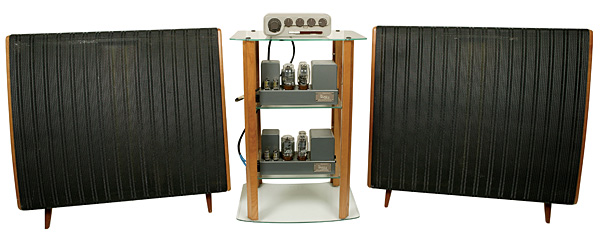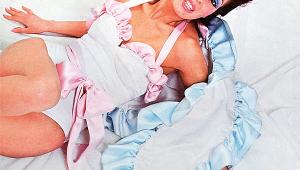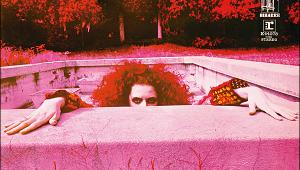Building A Vintage System

Putting a hi-fi system together can be one of life's great pleasures, but it can also become expensive and complicated if not done with care. Vintage hi-fi enthusiasts have three basic options. The first is to assemble a 'one make' system, normally using a combination suggested in an old catalogue as a starting point. Another is to assemble a mixed system of vintage components. The third is to add some vintage components to a modern set-up, or complete a vintage system using modern products.
One-Make Systems
This should be easy, and it certainly can be in many instances. Difficulties arise because over the years the differing life expectancies of various components mean that some are now more difficult to find than others, despite being sold in roughly equal numbers when new. As a rule, preamplifiers and tuners last the longest, so for the popular ranges these will be the easiest to find. Integrated and power amplifiers fare a little less well since heat and accidents (such as with shorted loudspeaker cables) have seen off a good few of them by now. Turntables are fragile and easily damaged while CD players and cassette decks suffer from mechanical wear and faults in complicated circuitry that are awkward to trace and expensive to sort out, meaning many have simply become discarded over the years.

Vintage loudspeakers often require the most persistence to source in good condition. Many have either been damaged or messed about with, got turfed out during domestic redecoration or become irretrievably scruffy. The 'correct' speakers can become a long-term stumbling block in reuniting a brochure cover star of yesteryear.
Age Matters
If you can, stick to components from roughly the same price level and year. Compatibility may be stretched if you try to combine units that differ greatly in age, even if they all have the same name on the front. Also check carefully if you are trying to build up a set of boxes that match visually. Many may well look like they do in the period catalogues but can be found to be slightly different in size, shape and colour when placed next to each other.
The truly dedicated may also try to find all the original accessories: stands and racks, cables, timers, headphones, recording media, demo records, etc. This is fun, but can easily cost as much as the main hardware for the more popular makes and models – unless good fortune smiles upon you.

Mixed Vintage Systems
This is what the hi-fi hobby was all about during the boom years – mixing and matching the key parts of a system to achieve the best possible results at a given price point. When the LP was the dominant source it was common to play the characteristics of the cartridge, arm, turntable, amplifier and loudspeakers against one another to obtain a balanced sound – a bright-sounding cartridge helping to offset a dull-sounding pair of loudspeakers, for example.
This worked well for single-source systems but fell down when an additional source, such as a tuner or a cassette deck, was added. The arrival of CD marginalised this approach further, the differences between players being insufficient to cover an exaggerated aspect of a system's performance elsewhere.
Refine And Upgrade
Nevertheless, today one could use a CD player (either vintage or modern) to benchmark the sound of a vintage amplifier and loudspeaker pairing. Once this has been resolved to your liking, a turntable can be added and tuned (with different cartridges, etc) in order to obtain the same tonal balance. A system built up like this is much easier to refine and upgrade than one that only sounds 'right' in one combination and becomes distinctly worse when anything is altered.

Of course, many 'classic' systems of mixed components have been suggested over the years, from the 'student grant' budget set-up of Dual CS505 turntable [HFN Feb '13], NAD 3020 amp [HFN Nov '12] and Wharfedale Diamond speakers to various costly 'Linn 'n Naim' combos. These remain a good starting point today, especially if you wish to hear the music of the time on something authentic. If this is your area of interest, buying and studying old hi-fi magazines is the place to begin.
Building up a system from mixed components may well introduce technical problems concerning electrical compatibility. More on this later, but if possible, always try to hear units working together before laying out large amounts of money when you are unsure of the technical details involved.
The third approach is to include vintage pieces in an otherwise modern system, and there are many good reasons to do this. The main one is that some still useful items are no longer made, or are expensive or limited in choice. Tape recorders (cassette and open reel) and FM tuners fit into this category, but other items such as linear-tracking or direct-drive turntables and certain types of loudspeaker are more widely available on the vintage market than new.
Source First
A good approach to building this type of system is to start with your most important source (probably one of the modern ones) and 'voice' the vintage components around that. High-quality tape recorders were built to be 'neutral', but everything else can vary to a significant degree in sound. There's quite a difference between the fairly dry presentation of a Yamaha CT-7000 [HFN Aug '12] tuner compared to the mellow tones of a Beomaster 5000 [HFN Dec '12] of the same era. Both are excellent designs, but the optimum choice will depend on the rest of the system.



















































